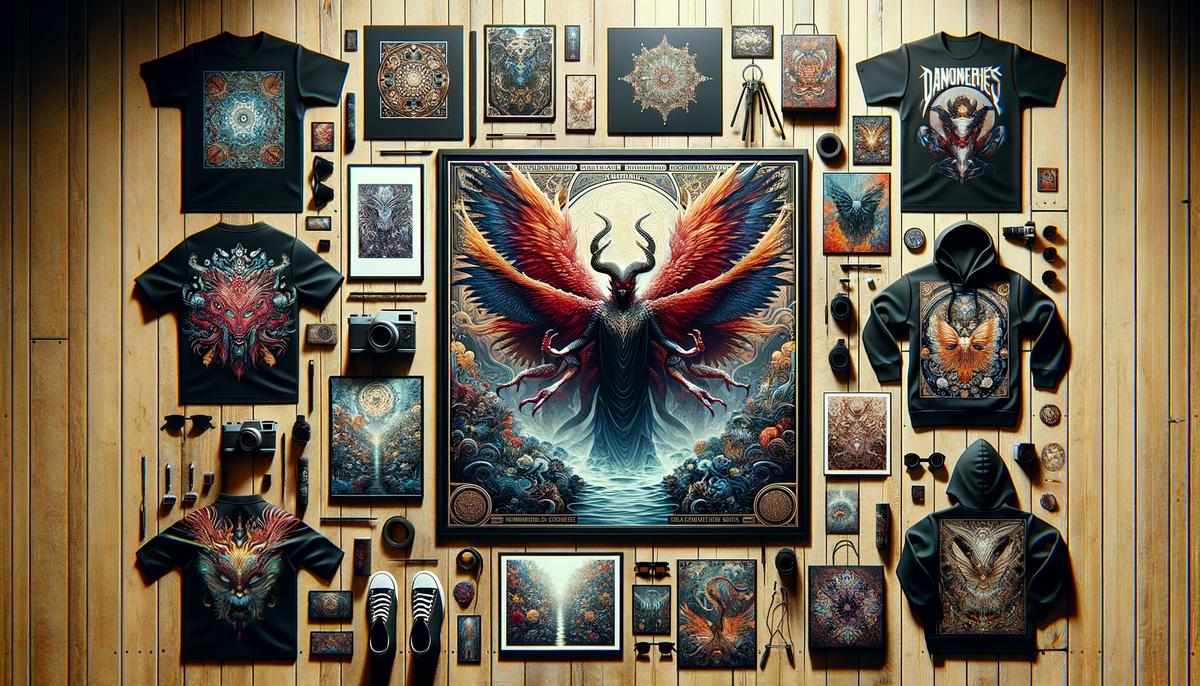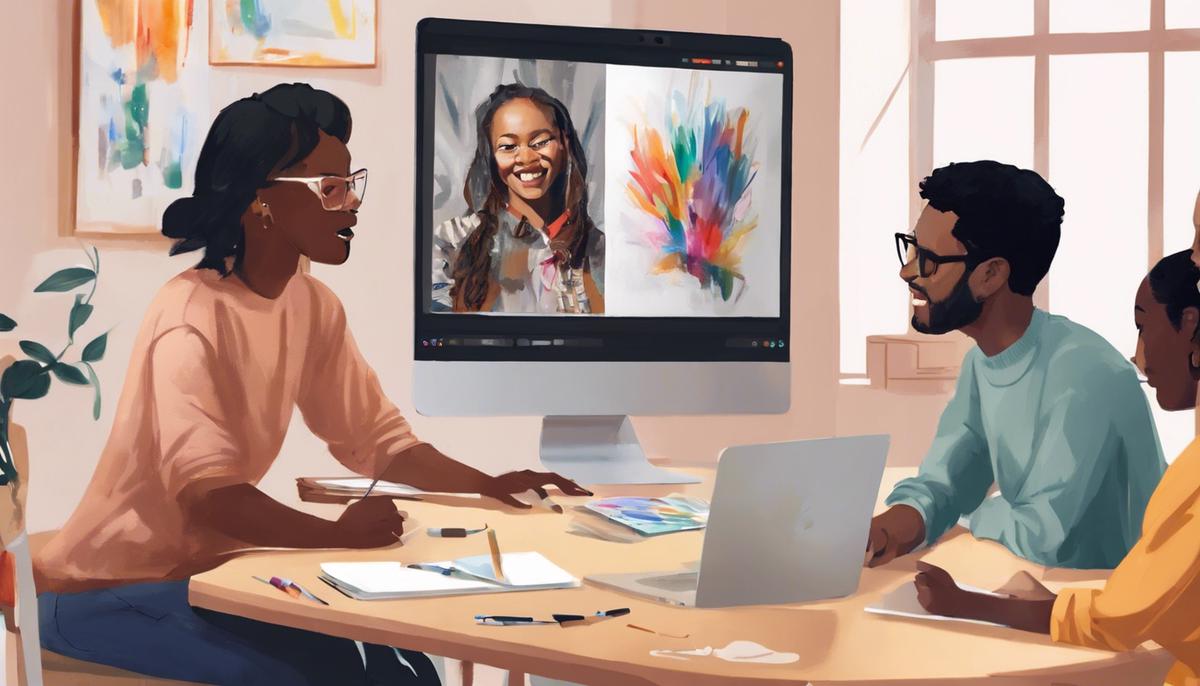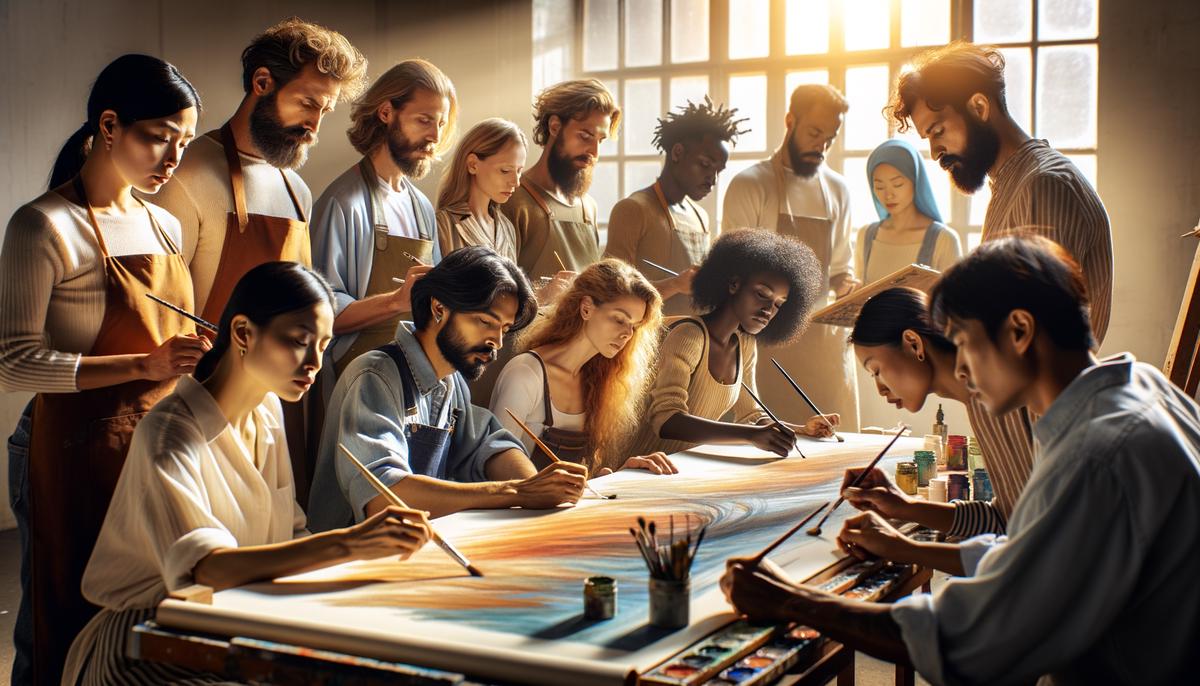Merchandise Sales
Merchandising is a promising avenue for artists to diversify their income. By creating and selling branded merchandise, artists can enjoy a steady revenue stream beyond traditional art sales. This approach offers financial benefits and strengthens the connection between the artist and their audience. Various merchandise types—such as prints, apparel, and accessories—provide fans with accessible ways to support their favorite artists.
Setting up an online store is an effective strategy for selling merchandise. Platforms like Etsy, Shopify, or custom-built websites enable artists to reach a global audience with minimal overhead costs. Social media plays a crucial role in promoting merchandise, allowing artists to engage directly with their followers and announce new products.
Offline sales opportunities should not be overlooked. Participating in art fairs, pop-up shops, or consignment with local retailers can introduce artists' merchandise to new audiences and provide valuable networking opportunities.
Understanding production costs and pricing is crucial for maintaining profitability. Offering a range of products at different price points can cater to a wider audience, ensuring there is something for everyone. This approach optimizes revenue potential and accommodates varying budgets, expanding the artist's fanbase.
Personalized and limited-edition items can generate excitement among fans, driving up sales. Exclusive merchandise drops or signed goods can make fans feel part of a community, further bolstering artist support.
Through merchandising, artists create a sustainable income stream while deepening ties with their audience, showcasing their brand beyond the canvas, and supporting their creative endeavors with financial stability.

Licensing Artwork
Art Licensing Basics
Diving into art licensing can be a thrilling yet complex journey for artists wanting to see their work in various commercial contexts. Licensing artwork involves granting a company or individual the right to use the artist's work for a specific purpose, duration, and within agreed-upon parameters. This opportunity amplifies an artist's exposure and provides an additional income stream that can complement direct art sales and merchandise revenues.
Getting started in art licensing begins with understanding one's copyright. Owning the copyright to your artwork allows you to license it to others. It's essential to familiarize oneself with relevant copyright laws to ensure full protection of creative works.
Licensing agreements are diverse. They range from exclusive licenses, giving a single licensee the sole right to use the art in a specific market, to non-exclusive licenses where multiple licensees can use the artwork simultaneously in various markets. Licenses can be limited by time, geography, and product categories, offering tailored options for both the artist and licensee.
Before entering any licensing deal, negotiating fair terms is paramount. This includes determining the scope of the license, duration, royalty rates or flat fees, and any clauses for renewal or termination. Having a clear contract outlining every detail is crucial.
Emerging platforms have simplified the entry into art licensing for many artists. Websites dedicated to connecting artists with potential licensors are abundant. However, building a strong, licensable portfolio that reflects consistency in quality and uniqueness in style remains crucial. This portfolio showcases your versatility and appeal to potential licensors in different markets.
Protecting intellectual property involves ensuring your artwork is used within the agreed-upon terms and addressing any infringements promptly. Monitoring how your work is being used in the market can help safeguard your rights and revenue.
Identifying potential licensing opportunities requires diligence and networking. Artists can analyze markets where their art could be a good fit, from home decor to apparel or stationery. Trade shows, art fairs, and online platforms offer valuable connections and insights into trends and demands in various industries.
Navigating art licensing might seem daunting at first, but understanding its basics sets a solid foundation. The key lies in knowing your rights, preparing a strong portfolio, and negotiating terms that respect your artwork and ambitions. This approach ensures a new revenue stream and potentially expands an artist's career onto diverse global platforms.
Online Teaching and Workshops
Online Teaching as an Income Stream
In the digital age, artists have an opportunity to share their expertise through online education. With the rise of remote learning, artists can share their skills, techniques, and insights with a global student base. This transition from creator to educator diversifies an artist's income and strengthens their personal brand.
When it comes to hosting online classes, artists have various platforms to choose from, each offering unique tools and benefits. Popular options include:
- Skillshare, Udemy, and Coursera for broader educational content
- Patreon for a community-centric mode of teaching, allowing artists to offer exclusive content, tutorials, and feedback to patrons at various subscription levels
- Zoom and Google Meet for live interaction and real-time workshops and classes
Selecting a platform that aligns with your teaching style, content type, and audience preferences is crucial for cultivating a successful online educational presence.
At the heart of a successful online course lies engaging and high-quality content. Planning your curriculum thoroughly, from introductory basics to advanced techniques, ensures there's something for every skill level. Incorporating a mix of video tutorials, live Q&A sessions, downloadable resources, and interactive assignments can keep students motivated and improve their learning experience.
Incorporating your personal art-making process, sharing stories about your creative journey, and discussing challenges you've overcome adds emotional depth to your classes. It transforms an instructional video into an inspiring, relatable narrative.
Effective marketing is key to attracting students. Utilize your website, social media profiles, email newsletter, and collaborations with fellow artists to broaden your reach. Creating compelling, shareable content that previews your course—like free mini-tutorials or insightful tips—can pique potential students' interest.
Encourage current students to share their feedback and learning outcomes. Positive student experiences can be compelling endorsements that attract new learners.
One of the most attractive aspects of online teaching is scalability. Online courses can accommodate an unlimited number of students, maximizing revenue potential and extending the lifespan of your courses. They can be sold and resold without additional costs for materials or venue rentals.
This scalability allows artists to refine and update their courses based on student feedback or changes in technology and techniques, keeping the content current and valuable.
Online teaching opens up possibilities for artists to share their craft, connect with enthusiasts globally, and establish an enduring income stream. By choosing the right platform, creating engaging content, effectively marketing classes, and leveraging scalability, artists can enhance their financial stability and reach without diluting their primary focus on art creation. In transforming their insights and techniques into educational content, artists carve out a new revenue path and contribute to the global tapestry of art education.

Collaborations and Partnerships
Collaborations: The Synergy of Creativity
In the contemporary creative world, collaborations are a way for artists to diversify their portfolios and amplify their income streams. Collaboration—whether with brands, fellow artists, or through participatory projects—combines diverse talents and visions, resulting in unique creations that may not have been possible independently. This segment explores the multifaceted nature of collaborations and how they can serve as a catalyst for financial growth and enhanced artistic visibility.
Collaborative projects can take on numerous forms, each offering distinct avenues for exploration and revenue:
- Brand Partnerships: Uniting with companies or brands for product launches or campaigns can provide artists with exposure to new audiences. From designing a capsule collection with a fashion label to creating illustrations for product packaging, these alliances combine commercial appeal with artistic integrity, resulting in mutually beneficial outcomes.
- Artist-to-Artist Collaborations: When artists join forces, the fusion of their distinct styles and ideologies can spawn groundbreaking artworks that captivate diverse fan bases. Whether collaborating on a mural, a digital art piece, or a joint exhibition, these partnerships allow artists to share costs and profits while nurturing their creative community.
- Participatory Exhibitions or Projects: Engaging in projects that involve community participation or revolve around thematic collaborations enables artists to tap into broader networks. These ventures often ignite public interest and can attract sponsorship or funding, opening doors to lucrative opportunities and media coverage.
Collaborations act as a bridge, connecting artists to markets and audiences that might have remained elusive in solitary endeavors. A collaboration with a widely recognized brand can catapult an artist's work into the mainstream spotlight, paving the way for an expanded clientele base interested in purchasing art, merchandise, or licensing deals. Partnering with artists from different genres or mediums can foster cross-pollination among fan bases, widening the artist's demographic reach.
Aside from the financial perks, collaborations add depth to artists' portfolios with narratives and affiliations that enhance their marketability and brand. Collaborative works often carry compelling stories of creative synergy, innovation, and the blending of cultures or disciplines—stories that captivate audiences and collectors alike.
Successful collaborations hinge on clear communication, shared goals, and equitable agreements. It's crucial for artists to align with partners whose vision and ethical stance resonate with their own. Drafting transparent contracts that detail copyright ownership, revenue sharing, and responsibilities can preempt potential conflicts, ensuring the partnership thrives.
By delving into collaborations, artists unlock avenues for financial enrichment and forge meaningful connections that support their artistic journey. Collaborations are more than just strategic maneuvers; they are a testament to the potential unleashed when creative minds converge. Through these partnerships, artists can explore new realms of creativity, gain valuable exposure, and diversify their income sources.

- Deresiewicz W. The Death of the Artist—and the Birth of the Creative Entrepreneur. The Atlantic. 2015;315(1):92-97.
- Scolere L. Divergent Logics of Arts Incubation: The Role of Cultural Entrepreneurship in Negotiating Artistic Autonomy and Economic Growth. International Journal of Cultural Policy. 2021;27(5):584-599.
- Thom M. Crucial Skills for the Entrepreneurial Success of Fine Artists. Artivate. 2018;7(1):45-57.























